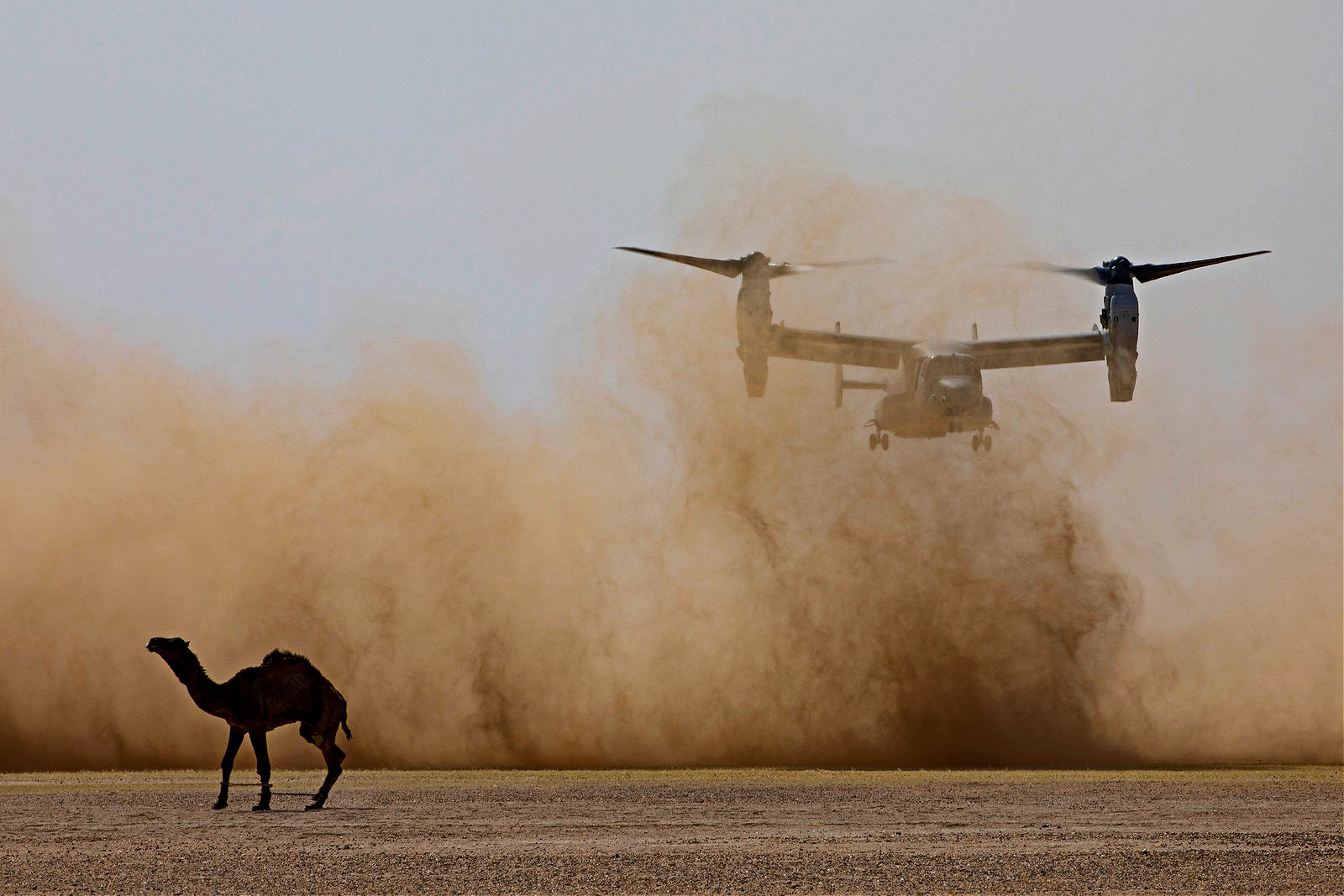
A Killing Design: Osprey Fatalities in the Top End
In 2022, the U.S. Army selected Bell Textron’s tiltrotor V280 as its Black Hawk replacement. This caused more than a few eyebrows to rise in consternation. The V-22 Osprey tiltrotor, flown by the Marine Corps and Special Operations Command, has had what can only be euphemistically regarded as a patchy record. It has been singularly odd in terms of the procurement and acquisition process, topped off by a tendency to kill its users while continuing to maintain a keen following. To date, no one has been held to account for what would, in any other policy context, be deemed criminally negligent.
The V-22 platform was the first tiltrotor deployed by the military, a strange creature combining the characteristics of fixed-wing planes, helicopters, and vertical take-off and landing craft. It was originally inspired by a Pentagon request to Bell and Boeing after the failure of the hostage rescue effort dubbed Operation Eagle Claw. The April 1980 attempt by the Carter administration, intended to rescue U.S. citizens being held by Iranian authorities, resulted in the deaths of five Air Force personnel and three Marines.
The platform is slated for flying till 2055 yet sports a very bloodstained resume. Prior to 2007, it has had four crashes, resulting in 30 deaths. Two of the first five prototypes suffered a number of fatal crashes in the early 1990s resulting in 30 deaths, though it formally came into the service of the Marines in 2007. After 2007, 24 deaths were caused by a further 10 crashes.
The Marine Corps has persisted in indulging in its use, seeing it as central in fighting the new lighter version of conflict the U.S. imperium envisages, one characterised by manoeuvrability and speed as marked out by the “Force Design 2030” strategy. “Proponents of Force Design 2030 argue,” writes ground forces specialist Andrew Feickert, “that current Marine Corps design is outdated and that new forces and operational concepts are required to prevail against China.”
One such appealing operational concept is EABO, otherwise known as Expeditionary Advanced Base Operations. It is a concept that has been embraced by the de-facto colonial Marine force located at the top end in Australia, cutely called by publicists worried about that fact the Marine Rotational Force – Darwin. Occupying forces, the belief goes, do not rotate. The unit, comprising 2,500 soldiers, has been based in the Northern Territory from April to October every year since 2012.
On the morning of August 27, a V-22B Osprey with 23 U.S. Marines onboard crashed on Melville Island just north of Darwin. Three marines were killed. Several others were left injured with varying degrees of severity. The episode brought back memories of another Osprey crash on Australian soil, which saw a failed effort on the part of the Marine Medium Tiltrotor Squadron 265 to land on the flight deck of USS Green Bay on August 5, 2017. On that occasion, there were also three fatalities, along with 23 injuries.
Those with claimed military or aviation expertise flock to the defence of this beast of moron and myth, admiring its “revolutionary design,” a “kind of plane-helicopter hybrid,” writes Peter Layton, involving wings tilting upwards “for take-off and landing and back down again for level flight.” It is appealing to its users, most notably the Marine Corps, for having greater range than helicopters, with higher speed and formidable carrying capacity.
Layton goes on to sing the praises of this lethal hybrid. “The Osprey is at the leading edge of aviation technology, with nothing else in operational service like it.” There are marvellous, evident reasons for that, but he prefers to note its essential role in the U.S. strategy of prosecuting EABO operations against China from Australian bases rather than its hazards.
The literature about the V-22 Osprey notes the thorny history of this supposed “dream machine” and the problems of the Major Defense Acquisition Program that brought it into existence. To follow its development and deployment was an act akin to faith and its accompanying delusions. Richard Whittle, writing on the problem-plagued machine, found that, no matter what he penned, he “could usually count on being chastised by someone, for the Osprey was as close as a defense issue gets to being a religious question. There were believers and nonbelievers, and neither had much use for those who gave credence to the other side.”
Certainly, believers can come up with the sort of waffle asserting that each “Osprey flight is a learning event for the pilots, the maintenance personnel, and the aircraft’s manufacturer.” This begs the question as to whether such equipment should ever see the light of day, especially given how often it snuffs out the lives of its users.
Other reasons for such an unfathomably dangerous record are also offered to distract from this deeply flawed craft. The National Commission on Military Aviation Safety, for instance, noted the baleful safety record of the U.S. military in toto in a 2020 study conducted at the behest of Congress. The audit found that between 2013 and 2018, U.S. forces suffered a remarkable 6,000 aviation safety “mishaps” during training and routine operations, resulting in 198 deaths and 157 lost aircraft. The bill for this dubious achievement had been $9.41 billion. The Osprey, it would seem, found itself in good, perishable company.
As with other religious questions, usually touching on doctrine and belief in some invisible, all-powerful tormentor, those saddled with it have paid the highest price. As U.S. military policy continues its inexorable march to the next war, this time shamelessly using Australian strategic real estate for the purpose, it will also happily place its own personnel in machines as deadly to them as to any intended adversary.

